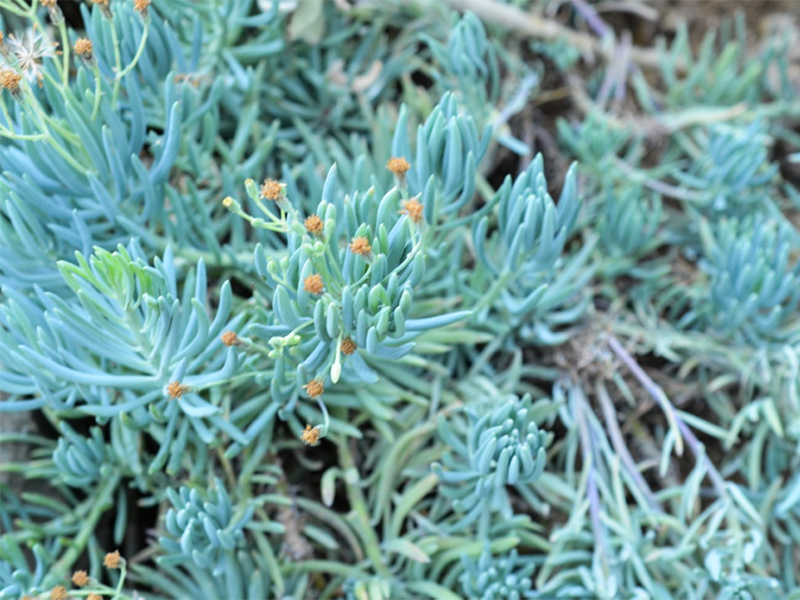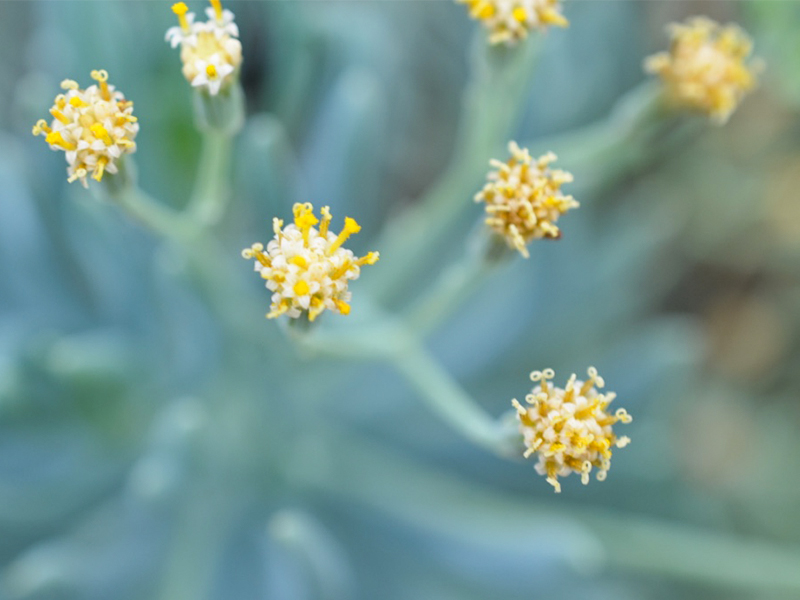| General Description | A mysterious taxon, probably hybrid, distinguished from the standard Senecio talinoides by a marked juvenile phase characterized by short branches and short leaves that are similar to those of Senecio citriformis. |
| Propagation | It is easy to propagate by cuttings in late spring to summer, just take a cutting of the plant let it dry for 1 or 2 weeks and put it in the ground with ideal soil conditions. Once established, this plant provides a source of cuttings to give away or to fill gaps in the garden. |
| Cultivation | Grows as a ground cover. Drought tolerant, but will accept irrigation. |
| Notable Specimens | Centennial Conservatory, Thunder Bay, Ontario, Canada. |
| Bark/Stem Description | Branched, long, tubular, stout. |
| Leaf Description | 7-15 cm long, 0.8-1.3 cm in diameter. Encircles the trailing stems or reduced to tufts at the stem tips. Erect or arching. Very fleshy. |
| Flower Description | Very small flowers that grow in clusters of 10-25, located at the end of stems held above the foliage. |
| Fruit Description | The fruit are long and thin and have a conspicuous feathery pappus attached that functions as a "parachute" which enables the seed to be dispersed by the wind. |
| Colour Description | It is the bluest of the "talinoides". Has a white coating. Flowers are white and yellow. |
| Texture Description | Has a waxy coating that protects from hot, sunny, and dry conditions. |

